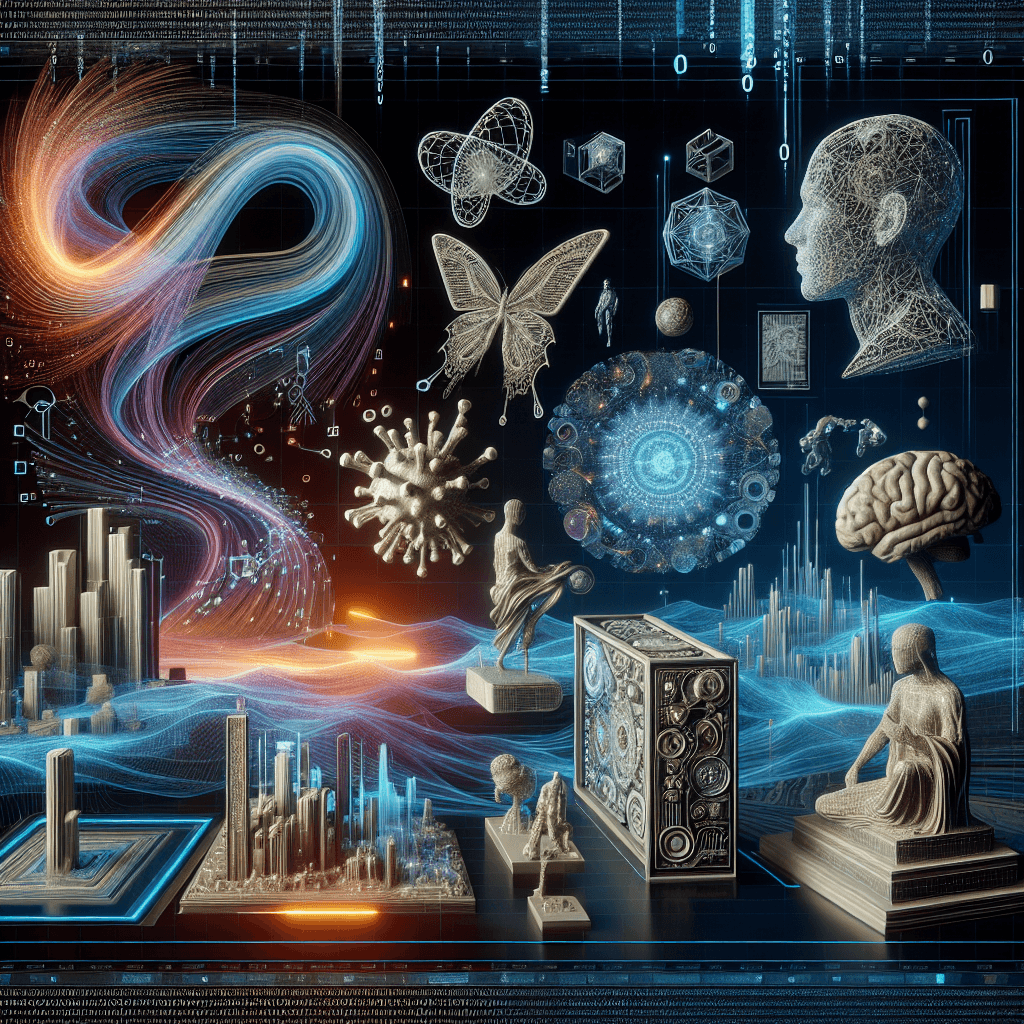Introduction: The Rise of AI in 3D Art
In the evolving landscape of digital art and design, the use of artificial intelligence (AI) has become a game changer. From creating lifelike renderings to generating imaginative worlds, AI tools are revolutionizing how artists and designers approach 3D image generation. As the technology continues to advance, several platforms stand out for their ability to facilitate stunning and intricate 3D images with unparalleled ease. This article dives into the top AI tools currently making waves in the realm of 3D image creation.
1. Understanding 3D Image Generation
3D image generation refers to the process of creating three-dimensional graphics and animations using specialized software. This technology is widely utilized in various sectors, including gaming, film, virtual reality (VR), and product design. With the advent of AI, the creation of 3D images has become increasingly accessible, enabling even those with limited technical expertise to produce high-quality visuals.
2. The Impact of AI on 3D Design
AI has reshaped the landscape of 3D design by automating complex tasks, enhancing realism, and streamlining workflows. Tools powered by AI utilize machine learning algorithms to analyze patterns, learn from vast datasets, and generate unique 3D designs that can resonate with human creativity. This synergy of technology and artistry equips creators with tools they need to express their visions more effectively.
3. Top Picks for AI-Driven 3D Tools
3.1. DALL-E 3: AI Meets 3D Visualization
For artists looking for an innovative solution, DALL-E 3 offers groundbreaking capabilities in generating 3D images from textual prompts. Developed by OpenAI, this tool allows users to create intricate 3D models based on simple descriptions. Whether you’re looking to visualize a concept for a product design or create an imaginative scene, DALL-E 3 provides an intuitive user experience that encourages creative exploration.
3.2. NVIDIA Omniverse: Collaborative 3D Design
NVIDIA Omniverse is a powerful platform that fosters real-time collaboration and simulation for 3D graphics. It allows teams to work together seamlessly across various software applications. Artists can create stunning environments and characters while leveraging powerful AI tools, thus achieving realism in textures, lighting, and physics. With Omniverse, the limits of creativity are pushed further than ever before.
3.3. Blender + AI Add-ons: A Flexible Solution
Blender is an open-source 3D creation suite that has gained immense popularity among artists due to its flexibility and comprehensive features. By incorporating AI add-ons, users can enhance their existing workflows dramatically. Add-ons such as Neural Textures and procedural generation tools integrate AI capabilities, allowing for stylish outputs that are both unique and efficient.
3.4. Runway ML: Creative Image Synthesis
Runway ML extends the capabilities of traditional 3D design by leveraging machine learning to create visually striking imagery. The platform enables users to edit videos and images in real-time using AI-based models, allowing for the synthesis and transformation of 3D elements seamlessly. This tool is ideal for creative professionals looking to innovate visuals in novel ways.
3.5. Artbreeder: Merging Creativity and AI
With Artbreeder, users can blend different images to generate unique 3D visuals. This collaborative AI platform harnesses deep learning to combine attributes from various images, resulting in enchanting outputs that are often unexpected. Artists can manipulate settings to refine their projects and create stunning visuals that stand out in digital spaces.
4. The Benefits of Using AI in 3D Image Creation
4.1. Speed and Efficiency
One of the most significant advantages of AI-driven tools is the ability to quickly produce high-quality images. Where traditional methods may take days or weeks, AI can streamline processes, allowing artists to focus on refining their vision rather than getting bogged down by technicalities.
4.2. Enhanced Realism
AI technologies, particularly in rendering and texturing, contribute significantly to achieving realistic visuals. Tools equipped with machine learning algorithms can simulate natural elements like lighting, reflections, and shadows more accurately than ever, leading to lifelike representations.
4.3. Democratizing Art Creation
AI tools are making advanced 3D design accessible to a broader audience, including those without formal training. By simplifying complex processes, these tools empower users to generate impressive visuals and nurture their creativity.
5. Challenges to Consider
5.1. Learning Curve
While many AI tools strive for user-friendliness, there can still be a learning curve involved in mastering specific features. Artists may need to invest time in familiarizing themselves with the software to harness its full potential.
5.2. Ethical Considerations
As with any technology, the use of AI in art raises ethical questions about originality and ownership. Creators must navigate these challenges while exploring AI-enhanced designs, ensuring they maintain their artistic integrity.
6. Tips for Getting the Most out of AI Tools
6.1. Blend Techniques
For optimal results, artists are encouraged to combine AI tools with traditional methods. By integrating both technological and manual artistry, creators can achieve truly unique visual outcomes that highlight their individual styles.
6.2. Experimentation is Key
AI tools often offer a range of options and settings that allow for experimentation. Trying out different combinations can lead to stunning and unexpected results, driving innovation and creativity.
6.3. Stay Updated
Since the field of AI is rapidly evolving, keeping abreast of the latest advancements, tools, and updates can provide artists with fresh insights and improved functionalities to enhance their work.
Conclusion: Embrace the Future of 3D Art
With the introduction of these top AI tools for stunning 3D image generation, artists and designers are better equipped than ever to bring their visions to life. The intersection of creativity and technology is paving the way for pioneering advancements in the art world. By embracing these tools, creators can explore uncharted territories and redefine the possibilities of 3D design, ensuring a vibrant future for visual storytelling.








